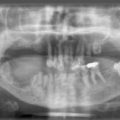Chapter 3).
Ion chambers can be used for such measurements; they have the advantage that they have a relatively uniform response over a wide range of energies and can be used to make both dose and dose rate measurements. The lower the level of dose that is to be measured the larger the ionization chamber needs to be in order for there to be sufficient ionization current to make a measurement. Doubling the volume of an ion chamber, will double its sensitivity, all other things being equal. Ion chambers with volumes in excess of 1 litre are available to measure transmission through protective walls. Smaller volume ion chambers are used to measure radiation output in the primary beam of an x-ray unit ranging in volume from about 0.5 to 6 ml. One disadvantage of such devices is that they have a relatively long time constant, which means they do not respond quickly to changes in the incident radiation intensity.
Instruments involving Geiger counters or scintillation detectors are more sensitive than ionization chambers, respond more quickly and use detectors of smaller size. This is because the signals that are initially generated are further amplified. Such instruments are more often used in detecting surface contamination in radionuclide laboratories; their chief disadvantage is that they are energy dependent, their response varying with the energy of radiation being measured. As such, unless the monitor has been calibrated with the energy of radiation being measured the reading will not be correct. Such instruments can be used in diagnostic x-ray installations, together with a radioactive source such as Americium 241 to check the integrity of barriers, at positions such as handles and light switches.
Mains operated radiation detectors are often placed at exits and other strategic places in radiation areas where either the level of radiation may fluctuate or the radiation sources are mobile and a warning is required if the source leaves the area. Detectors with either an audible or visual indication of a high reading are often placed on exit doors of the rooms of patients being treated with radioactive materials such that, if they try to leave the area, an alarm will alert the ward staff. Similar alarms are required in radiotherapy departments, to provide independent confirmation that the source(s) on gamma beam generators or remote after loading units have returned to the safe position.
Stay updated, free articles. Join our Telegram channel

Full access? Get Clinical Tree




